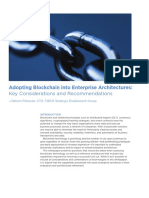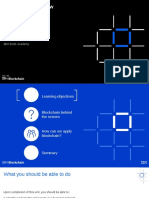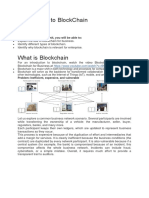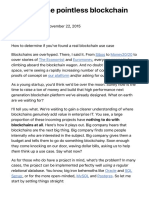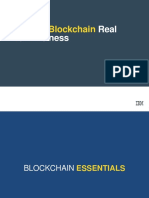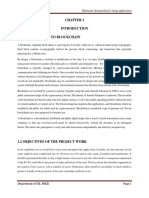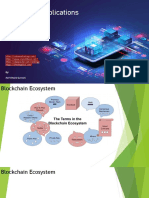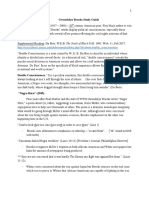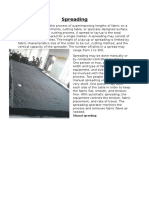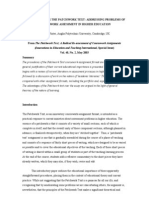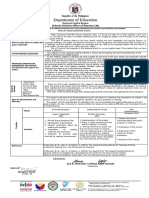0% found this document useful (0 votes)
13 views17 pagesChapter4-Blockchain Application Design
The document discusses the appropriate use cases for blockchain technology, emphasizing that it is not a one-size-fits-all solution and can sometimes be less efficient than centralized databases. It outlines key factors for designing a blockchain application, such as identifying business problems, participants, assets, and the need for trust. Additionally, it provides insights into modeling business concepts onto technical concepts and illustrates a car leasing example to highlight the benefits of a shared and permissioned ledger.
Uploaded by
Rana Ben FrajCopyright
© © All Rights Reserved
We take content rights seriously. If you suspect this is your content, claim it here.
Available Formats
Download as PDF, TXT or read online on Scribd
0% found this document useful (0 votes)
13 views17 pagesChapter4-Blockchain Application Design
The document discusses the appropriate use cases for blockchain technology, emphasizing that it is not a one-size-fits-all solution and can sometimes be less efficient than centralized databases. It outlines key factors for designing a blockchain application, such as identifying business problems, participants, assets, and the need for trust. Additionally, it provides insights into modeling business concepts onto technical concepts and illustrates a car leasing example to highlight the benefits of a shared and permissioned ledger.
Uploaded by
Rana Ben FrajCopyright
© © All Rights Reserved
We take content rights seriously. If you suspect this is your content, claim it here.
Available Formats
Download as PDF, TXT or read online on Scribd
/ 17


